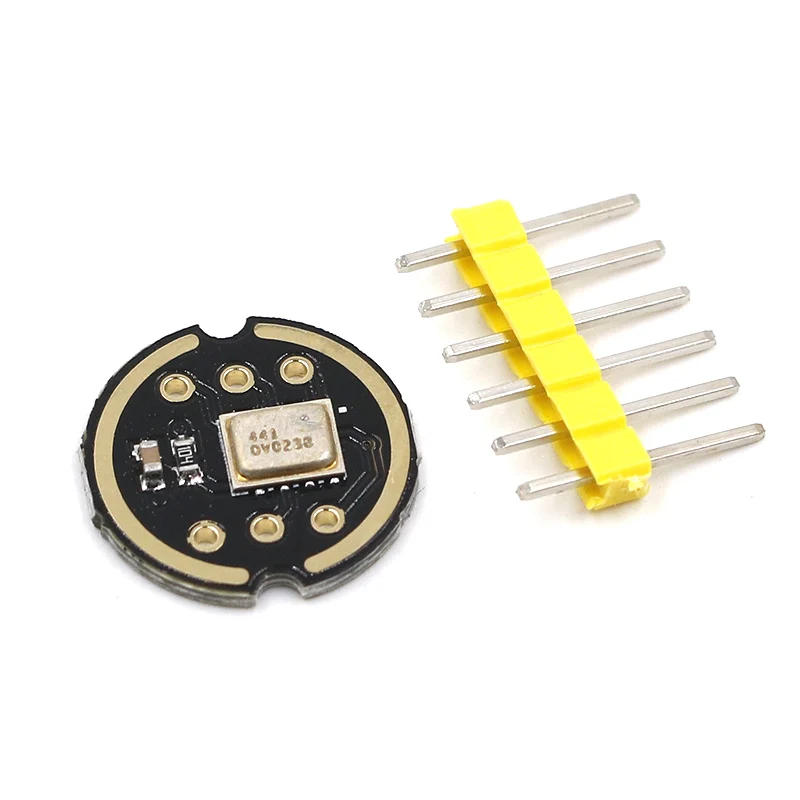Descripción
SPECIFICATIONS
Brand Name: quason
Origin: Mainland China
Condition: New
Type: Voltage Regulator
Model Number: vModule
Supply Voltage: ..
Dissipation Power: ..
is_customized: Yes
Operating Temperature: -40-+85
Application: Computer
size: 14*12mm
Product introduction:
The INMP441 is a high performance, low power, digital output, omnidirectional MEMS microphone with bottom port.
The complete INMP441 solution consists of a MEMS sensor, signal conditioning, analog to digital converter, anti-aliasing filter, power management and industry standard 24-bit I2S interface. The I2S interface allows the INMP441 to be directly connected to digital processors such as DSPs and microcontrollers without the need for an audio codec for use in the system. The INMP441 has a high signal-to-noise ratio and is an excellent choice for near field applications. The INMP441 has a flat wideband frequency response that results in high definition of natural sound.


Product Features:
1. Digital I2S interface with high precision 24-bit data
2. High signal to noise ratio is 61 dBA
3. High sensitivity - 26 dBFS
4. Stable frequency response from 60 Hz to 15 kHz
5. Low power consumption: low current consumption 1.4 mA
6. High PSR: -75 dBFS
Interface definition:
SCK: Serial data clock for I2S interface
WS: Serial data word selection for I2S interface
L/R: Left/Right channel selection.
When set to low, the microphone outputs a signal on the left channel of the I2S frame.
When set to high level, the microphone outputs signals on the right channel
SD: Serial data output of the I2S interface.
VCC: Input power, 1.8V to 3.3V.
GND: power ground
This product provides tutorials for using ESP32 modules with I2S functionality.
Connect to ESP32:
INMP441 ESP32
SCK >> GPIO14
SD >> GPIO32
WS >> GPIO15
L/R >> GND
GND >> GND
VDD >> VDD3.3
What is the difference between an omnidirectional microphone and a unidirectional microphone:
First of all, I understand that the sound divergence is all-round. One person speaks and diverge in the air.
As for how far it can pass, it depends on many factors.
1.directional microphone, the general pickup radius is very small, 30 cm is a big one, single use, put it on the mouth, the sound quality is very good, because it is not picked up again.
The shape is generally goose neck wheat, a rod, a curved rod, to your mouth, directivity, just listen to your voice.
With a single-point microphone, the sensitivity is limited to a certain range. Sensitivity is too high, causing sharp whistling, etc., involving many other devices
As for why not make a big pickup radius, there is a reason. Later
2.omnidirectional microphone, the general pickup radius is very large, one meter two meters three meters five meters have, compared with ten centimeters, this level is very different, it is not just picking a person\'s voice, but Multiple people, five six, seven eight or even ten.
Omnidirectional microphones are highly sensitive,
The omnidirectional microphone pickup radius is too large, and it will also pick up more ambient noise, so the sound quality is not as good as the single-point microphone, unless you do a good noise reduction. There is definitely a difference between collective use and single-person service.
But omnidirectional wheat has a benefit, the wiring is simple, not one by one. Suitable for small meetings, ad hoc meetings, some remote discussions, remote operations.
3.single-point wheat generally supports local amplification,
Omnidirectional microphones generally do not support local amplification. It should be noted that because of such high sensitivity, the local amplification whistling is very scary, and the current technology is difficult to deal with.

Pago y Seguridad
Su información de pago se procesa de forma segura. No almacenamos los detalles de la tarjeta de crédito ni tenemos acceso a la información de su tarjeta de crédito.












